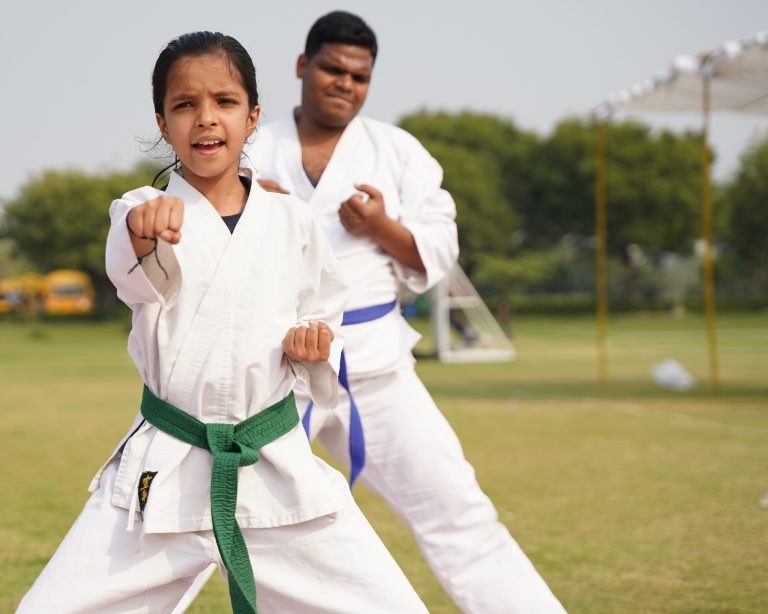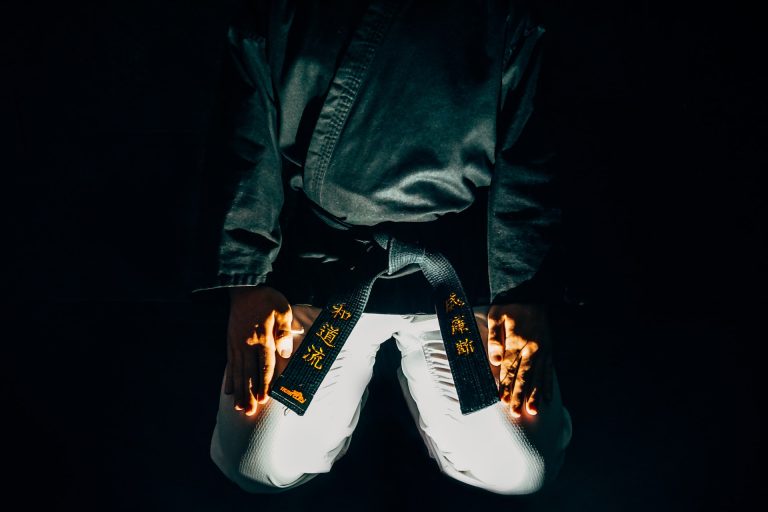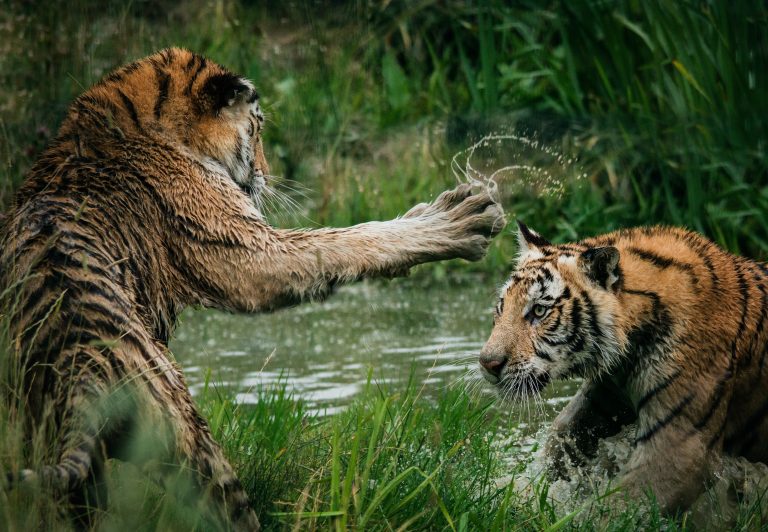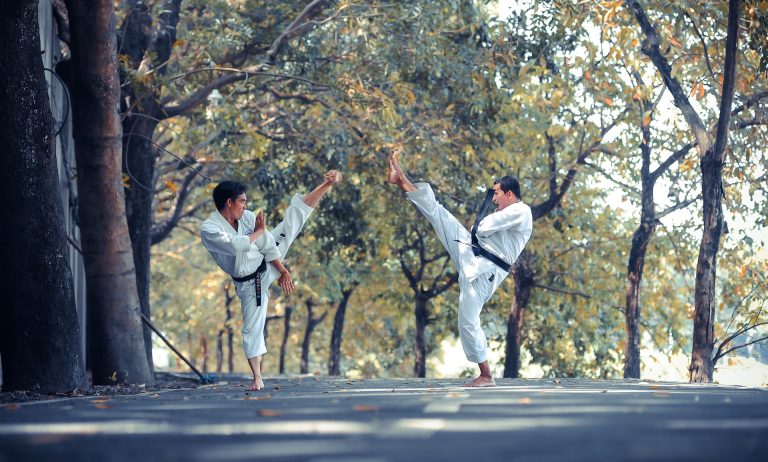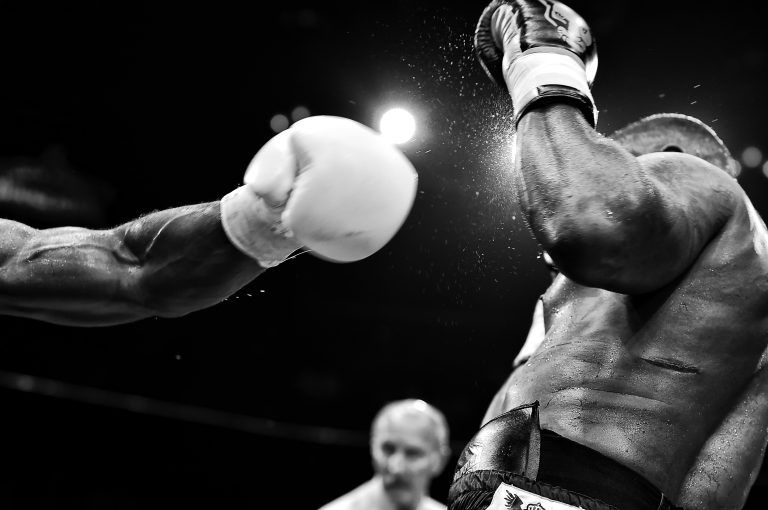Wie viele Karate-Stile gibt es?
Karate ist eine japanische Kampfsportart, die heute weltweit praktiziert wird. Es ist bekannt für seine schnellen und kraftvollen Techniken, die für Selbstverteidigung und Fitness verwendet werden können. Aber wie viele verschiedene Stile des Karate gibt es?
Im Allgemeinen gibt es über 100 verschiedene Stile des Karate, die meisten davon haben ihren Ursprung in Japan, jedoch haben auch andere Länder ihre eigene Variante entwickelt. Einige der bekanntesten Stile sind:
Shotokan Karate
Dies ist eine der bekanntesten Karate-Stile, die von Gichin Funakoshi entwickelt wurde. Dieser Stil zeichnet sich durch die Betonung von Kata (einem geordneten Satz von Bewegungen) aus. Shotokan Karate wird oft als traditioneller Stil betrachtet.
Goju-Ryu Karate
Dieser Stil wurde von Chojun Miyagi entwickelt und legt seinen Schwerpunkt auf Atmung und innere Energie. Goju-Ryu Karate ist bekannt für seinen Einsatz von schnellen Schlägen und Tritte.
Wado-Ryu Karate
Wado-Ryu Karate wurde von Hironori Ohtsuka entwickelt und betont die Verwendung von Körperkontrolle und Technik. Dieser Stil verwendet viel Vermeidungs- und Kontertechniken und konzentriert sich auf die Anwendung von Techniken in der Selbstverteidigung.
Shotokai Karate
Shotokai Karate wurde von Shigeru Egami entwickelt und legt seinen Schwerpunkt auf Beweglichkeit und Geschwindigkeit. Dieser Stil betont auch die Nutzung von Ki (Energie) in seinen Techniken.
Kyokushin-Karate
Kyokushin-Karate wurde von Masutatsu Oyama entwickelt und zeichnet sich durch seinen Einsatz von Vollkontakt-Sparring und tiefen Techniken aus. Dieser Stil wird oft als einer der “härtesten” Karate-Stile betrachtet.
Es gibt jedoch auch viele weitere Karate-Stile wie Shito-Ryu, Uechi-Ryu, Shudokan, Chito-Ryu und viele mehr. Jeder Stil hat seine eigenen Besonderheiten und Techniken und es ist unmöglich, sie alle aufzulisten.
Insgesamt gibt es viele verschiedene Karate-Stile, die aus verschiedenen Regionen und Traditionen stammen. Jeder Stil hat seine eigenen Vor- und Nachteile und bietet eine einzigartige Erfahrung für den Praktizierenden. Es ist jedoch wichtig zu beachten, dass, egal welchen Stil man praktiziert, der respektvolle Umgang mit anderen und die Entwicklung von Fähigkeiten wie Ausdauer, Konzentration und Disziplin im Vordergrund stehen sollten.
Frequently Asked Questions About Karate
Karate is a martial art that originated in Okinawa, Japan, in the late 19th century. It is now widely practiced around the world and has many different styles. In this blog post, we will answer some of the most frequently asked questions about Karate.
1. How many Karate styles are there?
There is no definitive answer to this question because the number of Karate styles is constantly evolving. However, it is estimated that there are around 100-150 different Karate styles in the world today. Some of the most popular styles include Shotokan, Wado-Ryu, Goju-Ryu, Shito-Ryu, and Kyokushin.
2. What are the differences between Karate styles?
The differences between Karate styles are mainly in their techniques, training methods, and philosophies. For example, the Shotokan style focuses on striking techniques and emphasizes speed and power, while the Goju-Ryu style emphasizes breathing techniques and conditioning the body. Additionally, some styles place more emphasis on self-defense techniques, while others focus more on sport-based competitions.
3. What is the difference between Karate and other martial arts?
Karate is often compared to other martial arts like Taekwondo and Kung Fu. While there are similarities between these martial arts, Karate has its unique features. One of the most significant differences is that Karate is more focused on striking techniques like punches, kicks, and knee strikes, while other martial arts also incorporate grappling techniques like throws and joint locks. Another difference is that Karate places more emphasis on the development of the mind and spirit, alongside physical training.
4. Is Karate suitable for self-defense?
Yes, Karate is an effective martial art for self-defense. Karate emphasizes practical self-defense techniques, which can be used in real-life situations to protect yourself from attackers. However, it is essential to remember that self-defense involves more than just physical techniques. It also includes situational awareness, verbal de-escalation skills, and a willingness to avoid confrontations altogether.
5. Is Karate suitable for children?
Yes, Karate is a great martial art for children. It can help children develop self-confidence, self-discipline, focus, and respect for others. Additionally, Karate can also help children develop physical fitness, coordination, and balance. However, it is vital to ensure that the Karate class a child attends is age-appropriate and taught by qualified instructors.
6. How long does it take to become a black belt in Karate?
The time taken to become a black belt in Karate depends on the individual’s dedication, training, and natural ability. Typically, it takes several years of consistent training to reach the black belt level in Karate, with a minimum of three to five years for most people. However, some individuals may progress more quickly, while others may take longer.
7. Is there a ranking system in Karate?
Yes, there is a ranking system in Karate, and it generally follows a colored belt system. Beginners start with a white belt and progress through a series of colored belts, including yellow, orange, green, blue, and brown, before reaching the highest rank of black belt. The ranking system varies slightly between different Karate styles.
8. Can people with physical disabilities practice Karate?
Yes, Karate is a martial art that can be adapted to suit people with physical disabilities. Many Karate schools offer classes specifically tailored for people with disabilities, and instructors can adapt techniques to suit individual needs.
9. How can I find a good Karate school?
Finding a good Karate school is crucial to ensure that you receive proper training and progress safely through the system. You can start by researching local Karate schools online and reading reviews from other students. It is also recommended to visit different schools to observe classes, meet instructors, and ask questions.
Conclusion
Karate is a fascinating martial art with a rich history and many different styles. Whether you are interested in self-defense, physical fitness, or personal development, Karate has something to offer. By answering some of the most frequently asked questions about Karate, we hope to have given you a better understanding of this martial art and its benefits.
Inhaltsverzeichnis

